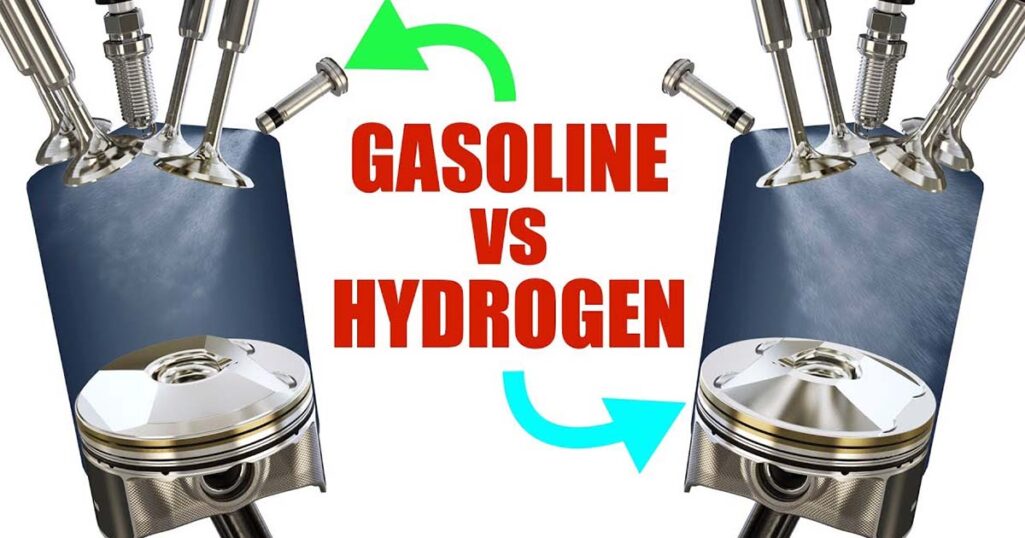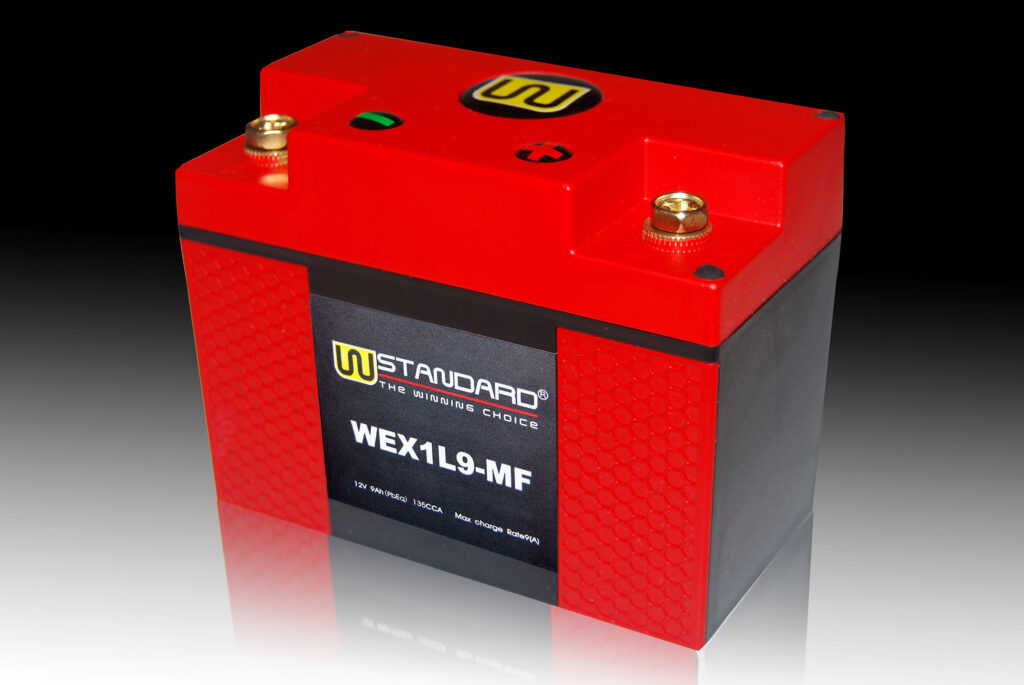
Source: wstandardusa
The rechargeable battery in your car’s starter is likely a flooded lead acid or an AGM variety. Hudson first installed batteries in its automobiles in 1918. After that point, flooded batteries became the standard in automobiles. However, times and technology have advanced. Nowadays, drivers can choose between AGM and regular batteries for their cars.
The reliable, flooded lead acid architecture is widely used in automobile batteries. On the other hand, AGM batteries have seen increased demand in recent years. While the AGM battery is similar to the lead acid battery in many aspects, it offers improved performance. However, there are disadvantages as well. In this article, we’ll compare lead acid and AGM batteries.
What are AGM batteries?
AGM batteries have two layers of fiberglass matting between two layers of lead plates. “Absorbent Glass Mat” (AGM) describes the material used to make these batteries. The electrolyte solution isn’t free-flowing because the glass mat wicks it and keeps it suspended.
The absorbent glass mats allow battery manufacturers to pack more lead plates. When there’s more lead in the battery, it can store more energy. However, the batteries emit a toxic gas called hydrogen sulfide as they are being charged.
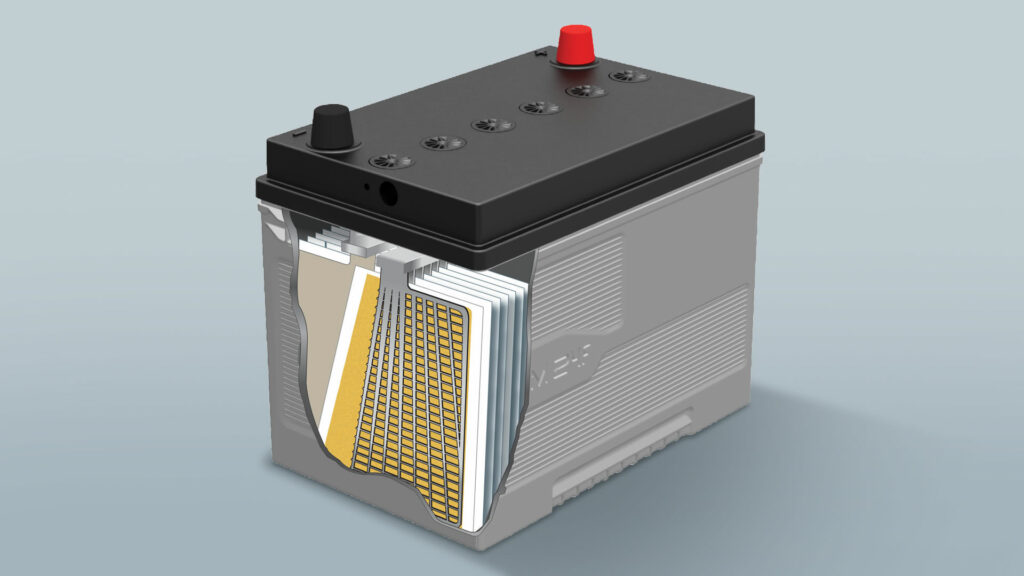
Source: shutterstock
What Are Standard Batteries?
The lead plates of the standard battery are entirely immersed in the electrolyte. Some water is lost when the gasses created by its chemical reaction are released into the atmosphere. The electrolyte levels must be regularly restored as a result.
Due to their direct atmospheric venting, explosive gases are released during the charging process of lead-acid batteries. Installation must, therefore, only take place in locations with sufficient airflow.
What Are The Differences Between AGM and Lead Acid Batteries?
Regarding base chemistry, an AGM battery and a conventional lead-acid battery are equivalent. Both rely on a chemical reaction between the lead plates and the sulfuric acid/water-electrolyte to generate hydrogen and oxygen.
Lead acid batteries and AGM batteries have many similarities but also have important distinctions, which are highlighted below:
1. Differences in Adaptability and Leakage
The AGM battery can be used in any orientation because it is sealed and made from a fiberglass mat. However, because of the liquid electrolyte inside, flooded cell batteries must always be stored upright. Corrosion can occur if electrolyte spills aren’t cleaned up. If it leaks electrolytes, the fluid will corrode any metal components nearby.
2. Strength, Noise, and Shock Sensitivity
The AGM battery is usually stronger than the flooded lead acid battery because it was first made for use in the military and airplanes. AGM batteries are much less sensitive to damage from vibration and impacts than regular batteries.
AGM batteries have vital parts because the glass mat and battery plates have been joined together. Because of their structure, batteries produced for race vehicles and motorbikes are resistant to vibration and stress.
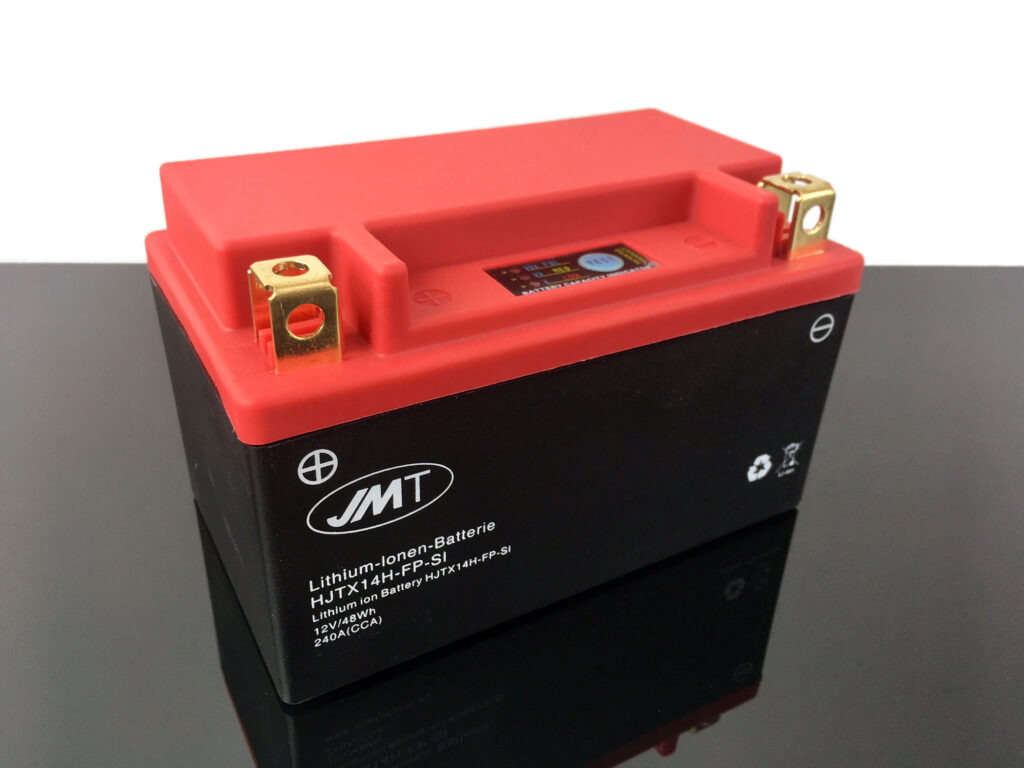
Source: wrs.it
3. Need for Repairs
Installing an AGM won’t cause trouble because they are sealed and never need the electrolyte to be filled out. It is ideal for usage in hard-to-reach places, such as car trunks and under-seat battery compartments.
Conversely, the flooded standard battery must have its electrolyte changed regularly and be placed in an area with enough ventilation because it produces gasses and steam.
4. Power Shot
The AGM battery’s low internal resistance allows for fast charging. Although it can not charge as quickly as a lithium battery, it can charge up to five times as fast as a flooded lead acid battery using the same energy source.
5. Internal Effort and Energy Production
The AGM battery has a low internal resistance, one of the least of all lead-acid batteries. It is common for a brand new flooded lead acid battery to have an internal resistance of 10-15%, while a brand new AGM battery may have a resistance of only 2-3%.
Reduced heat generation is another benefit of lowered resistance. There’s an additional perk to reduced resistance. As compared to flooded batteries, AGMs fare far better while under high demand.
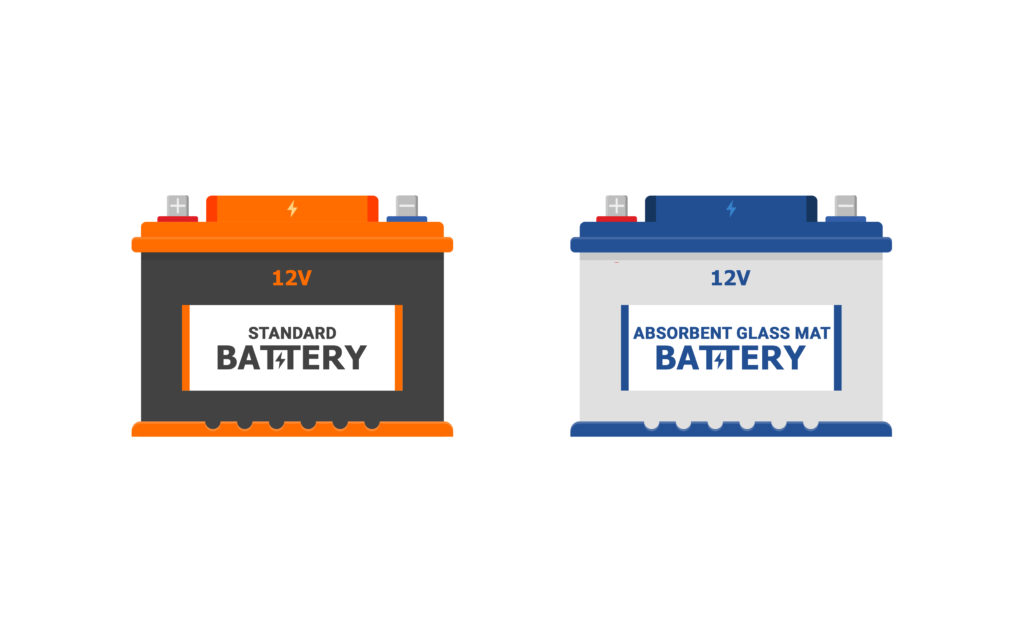
Source: carparts
6. Discharge Proportionality
AGM batteries offer a greater depth of discharge (DoD) of 80% than flooded cell batteries, which only provide a 50% DoD. As a result, the AGM battery is ideally suited for long-term use in deep-cycle applications. Although the discharge capacity of an AGM battery is relatively high, it is not advised to go below 50%.
7. A Probability For Overcharging
The overcharging capacity of flooded lead acid batteries is significantly greater than that of AGM batteries. AGM batteries are more at risk for thermal runaway, which overcharging can trigger because they are sealed. Overcharging will reduce the lifespan of an AGM battery even if thermal runaway is ignored.
Its components may melt, create poisonous fumes, and lose electrolyte solution through evaporation. Battery overheating increases the risk of fire or explosion.
8. High-Temperature Resistance
The AGM battery often has higher Cold Cranking Amp (CCA) ratings and improved performance across the temperature range. The glass mat’s electrolyte doesn’t swell like a liquid when frozen. Because of this, AGM batteries are not affected by the cold. The colder the climate, the better it functions.
However, lead acid batteries that have been flooded are at risk from freezing temperatures. As a result, the lead battery plates may crack, and the casing may leak. If the temperature is high, the electrolytes in a flooded lead acid battery will evaporate, and the battery plates will become exposed to air.
9. Age and Natural Death
Standard lead-acid batteries often have a shorter lifespan than AGM batteries. AGM batteries have more shelf life than their flooded counterparts because of their low self-discharge rate. Compared to the standard 3- to 5-year lifespan of flooded batteries, a well-maintained AGM battery can survive up to 7 years.
10. Profitability
The flooded battery is an affordable and trustworthy option for ordinary automobile starter batteries. The cost of an AGM battery can be twice as much as a standard battery. AGM batteries may seem expensive initially, but they save their owners a lot of money in the long run.
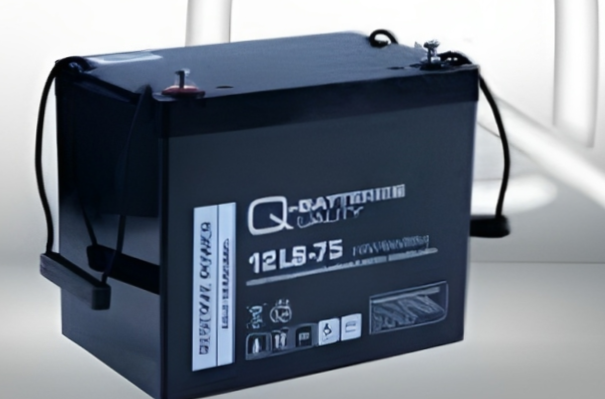
Source: VP batteries
11. Damage and Sulfuration
The AGM battery is less likely to leak electrolyte liquids and less likely to release acidic steam, but it is still more corrosion-resistant than a flooded battery.
But if you discharge either battery over an extended period, you will eventually experience sulfation. However, AGM batteries have slightly higher resistance, partly due to their slower self-discharge rate.
The battery should be replaced if the terminals show corrosion or sulfation. Changing a car battery can be simplified if you know what you’re doing.
FAQs
What happens if an ordinary battery is used instead of an AGM battery?
Using the incorrect spare part would resemble replacing an AGM battery with an EFB or conventional battery. The vehicle’s comfort and Startup systems may not operate as intended, reducing battery life. Therefore, only AGM should be used in replacement.
What is the average lifespan of an AGM battery?
Standard 12-volt Gel or AGM batteries have a six-year lifespan when fully charged and stored. When left at float voltage for five or six years at a constant 25 degrees Celsius, the battery maintains 80 percent of its initial capacity.
Can standard and AGM batteries be used together?
Battery types should not be mixed. A slow overcharging of the starter battery may be the worst, but even that is treatable. Try to get a flooded starting lead acid battery with vent caps to fill off the electrolyte when it boils more quickly than usual.
What happens if an AGM battery is charged with a regular battery?
AGM batteries can be damaged by being charged too frequently. The same amps are obtained with 15–17 volts on regular batteries. However, if the voltage exceeds 15 volts, the AGM will overheat, and the pressure will be high enough to blow the safety valve.
Conclusion
In conclusion, there are many considerations when deciding between an AGM and a standard battery. While AGM batteries have several benefits in terms of performance and longevity, they are also more costly and have a lower tolerance for high temperatures.
While standard batteries are more commonly available and more reasonably priced, they are more vulnerable to damage and need more maintenance. The choice between these two battery types should be made after carefully considering the user’s demands and the vehicle in issue.



